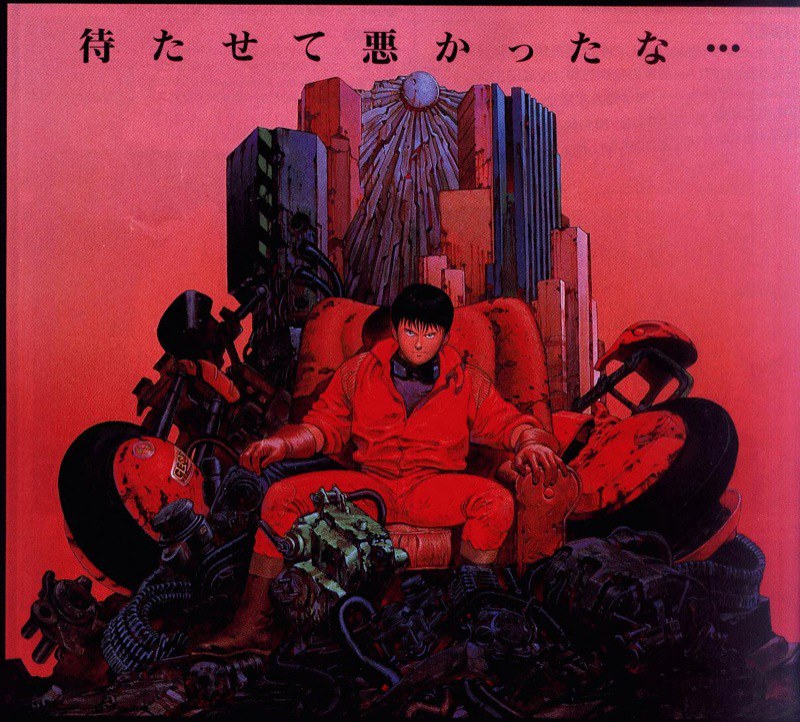You need to read Akira
Kevin Oliver writes about why he thinks everyone should read “Akira.”
Mar 17, 2023
“Akira” burst onto the animation scene when it was released in 1990. Western audiences had never seen any animation so unapologetically visceral, kinetic and so adult because, until its release, animation was looked at as an entertainment medium for children. “Akira” shattered that notion and garnered a respectable million dollars upon release. It showed that the medium was capable of so much more and the only limitation is our imaginations.
The cyberpunk film, directed by Katshiro Otomo, is set in a dystopian neon-infused Tokyo reeling from the aftermath of World War 3. It follows a group of misfits as they try to navigate a city that has, for the most part, disregarded them. With an authoritarian government on one side and revolutionaries fighting seemingly unwinnable battles on the other, the boys focus on what they do best: getting into trouble.
The boys aren’t ordinary punks, they’re also a biker gang fitted out with hyper futuristic bikes, plus an unholy union of violence and love for high speeds. The film begins with them attacking a rival gang through the dirty streets of Neo Tokyo. Violence is all the boys know – they’re enthralled by it and the opening is the perfect embodiment of this.
Their violence isn’t born out of need, it is born from their dopamine-seeking. They take pleasure in the pain they inflict on the rival gang as they race through the neon streets, disregarding the existence of any passersby just as their city has disregarded them. The “kinectism” of this scene is high and the animation does a great job at expressing that to the viewer. Each blow has a weight behind it that makes their advances feel all the more lethal. The velocity of the motorbikes can be felt from the spiraling tires and the dust particles left in their wake. This level of quality is put into every scene of the film and intricately woven together to tell a sprawling tale of rebellion, friendship and psionics.
“Akira” is a phenomenal piece of art but, if any of this sounds appealing to you, then you need to read the manga. The manga is the original body of work that “Akira” is based on, also penned by the author. However, the difference between the two bodies of work is their depth. The film is by no means shallow, but it doesn’t have the same amount of time as the manga to fully flesh out the concepts “Akira” presents. The manga is contained in six volumes, but the movie only manages to cover the first three before ending.
Three volumes are a lot of development to miss out on. During these volumes, spiritual and political elements of the story have more time to breathe alongside further advancement of the plot in ways that the film could not execute due to time constraints. The most drastic piece missing from the film is the “Mad Max”-esque arc that begins at the halfway point. I won’t spoil it, but a major event happens that leaves the powers of Neo Tokyo shifted and the land itself as a ruined shell of the neon night city it used to be. The atmosphere shifts to a bleakness compounded by the new sense of desperation and struggle inhabitants of Neo Tokyo face.
In this new world order, Tetsuo and Akira now lead a zealous cult of young men they keep enthralled with drugs and their psychic powers. Akira is propped up as the ruler of the cult, but Tetsuo is the one pulling the strings of the pseudo-organization with his less than altruistic motives. Tetsuo’s only goal is to keep his people subjugated, ignorant and submissive to his will. As for his friend Kaneda, he is nowhere to be found. After the events that took place, no one is quite sure what happened to him and no one has seen a sign of him. He becomes a lingering mystery to all.
Kei and her Aunt Chiyoko (a character omitted from the film entirely) are wanderers of the newly risen wasteland who attempt to scavenge whatever can help them survive. Alongside them are the psychically sensitive Kiyoko and Takashi, now in deteriorating condition, who they have taken on the role of caretakers for. These four aren’t the only characters still sticking around as the mystical Lady Miyako’s presence is felt throughout the tarnished city. Her luminescent temple has become a beacon of hope for the stragglers of the neo wasteland. Miyako and her monks offer shelter, assistance and aid to any who are willing to make the trek to the temple.
With the extra time it has, the manga is able to elevate the story of “Akira” so much further than the film possibly can. Even without the addition of audio and motion from animation, Katshiro Otomo was able to fully realize the story he set out to craft in this manga. No restraints and no filters, just Otomo pouring his creative heart out with a pen. The complete story can only be found in the manga, and I think anyone who likes the “Akira” film or has interest in it all should read it.












